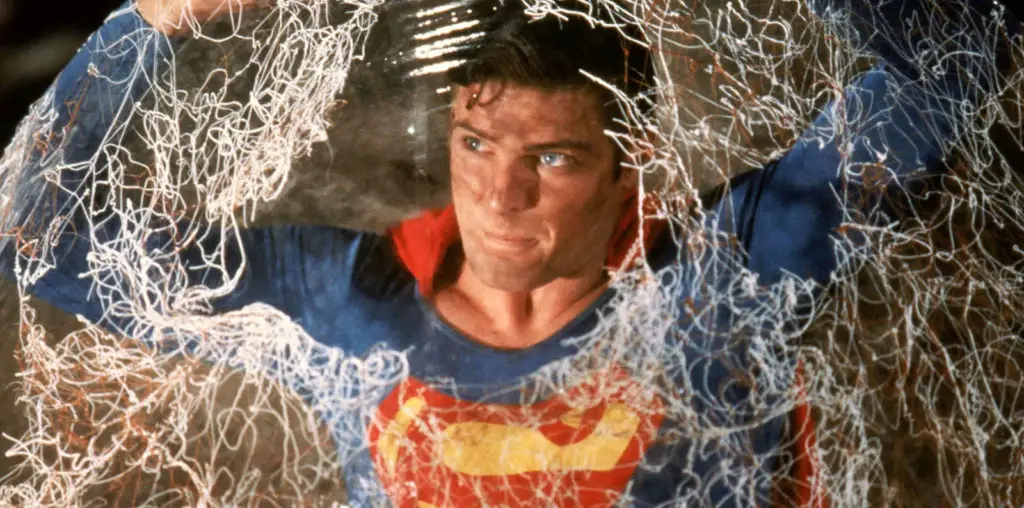
Let’s review the campaign for Open Water, the recent release from Lions Gate. The movie revolves around two scuba divers who become stranded in the ocean after being separated from their tour group. Opening on 47 screens – an extremely small number in comparison to the thousands that major studio releases such as Collateral or The Village are released to – “Open Water” grossed around $24 million in its first weekend.
The Posters
There are two posters that show different takes on the same theme. On one, the stranded swimmers are shot from a distance. The antagonists of this poster are the elements, with a huge wave behind them, ominous storm clouds on the horizon and endless stretches of water all around them.
The other has a tighter shot of the two almost completely eclipsed by the dorsal fin of a passing shark setting the stage for the other main “villain” of the movie. Assuming this poster was the primary one given to theaters, this poster works better, in my opinion, at attracting a mass audience. The “tidal wave” version brings to mind grand CGI fests like The Perfect Storm. The “shark fin” one-sheet shows a more demonstrable adversary for the divers and gives the audience something more concrete to sink their imaginations into.
Because the movie relies so heavily on suspense and actual terror it would have been very easy to cut a trailer that gives away the entire movie as most trailers do. Instead, it relies on a brief setup, some shots of sharks swimming past the stranded divers and lots of storm clouds gathering. This was probably great at freaking people out in theaters where group panic can set in. It’s lack of special effects presented it as an alternative to the other summer fare, an asset which probably helped it in its goal of attracting people who like movies where you have to use your mind.
Relatively sparse, the website contains a trailer, a story description and a screensaver available for download. Reviews from some major magazines are included as pitching tools for those easily swayed by the opinions of others. Most of the rest of the site is devoted to money making opportunities, including an online store where you can purchase T-shirts and the option to buy tickets online.
There are a couple other features, including a “Survival Guide”, where you can view health and safety tips in the off chance that while you are shipwrecked you still have an internet connection. There is also the ability to register on the site as well as a message board which had a grand total of two posts almost a week after the opening. That’s kind of sad.
Media Coverage
Most (seemingly all) of the media coverage for “Open Water” contained some sort of reference to Steven Spielberg’s “Jaws”. This is, in some respects, unavoidable. Anytime you put sharks on screen you are going to bring what many consider to be Spielberg’s masterpiece to mind. The fact is, though, that these are two completely different movies on shark-phobia. One is a monster movie, where the shark takes the same role as the virus in “Outbreak”. It is an irrational and larger-than-life killer that “HAS TO BE STOPPED!” by a set of heroes.
The other, the sharks of “Open Water”, are just sharks. This is what they do. This is where they live. In that environment, people are food the same way everything else in the water could be food. What the media has done is create a positive perception of the movie in people’s minds before they even see the movie. By linking it to an established classic this movie gains ten times as many recognition points as it otherwise would have had. This adds it to the “must see” list for many people.
Relating something unknown to something familiar is also an effective rhetorical trick for the journalist working on deadline and unable to come up with an original or inventive angle for a story. That’s at least two or three paragraphs per story that the writer didn’t really have to work too hard on since they basically contained allusions to “Jaws”. So by taking the easy way out in the story the writers did the film a favor.
This is not to say that’s what all the writers did. Nor am I saying that this relationship may not have been coaxed by the marketing department in charge of the movie. It’s highly likely that press materials for “Open Water” contained references to “Jaws” or other shark-themed movies in an effort to create the association in the writers’ mind and increase the likelihood this would carry over into any articles.
Overall
Obviously this was an effective campaign. As I stated above, stories presenting it as a “Jaws” for the next generation helped it immensely by presenting it as part of a cultural lineage and not just another pretentious art film. Kudos to all involved.
As moviemaking costs increase, the pressure to successfully market those movies becomes greater. In an attempt to show how marketers are trying to put the most hinders in the theater seats, Chris Thilk breaks down why some movie campaigns work and some don’t. The posters for “The Rocketeer” and “Unforgiven” remain two of his all-time favorites. For Chris’ ongoing movie journal and other various musings, visit his Random Thoughts blog.</i
